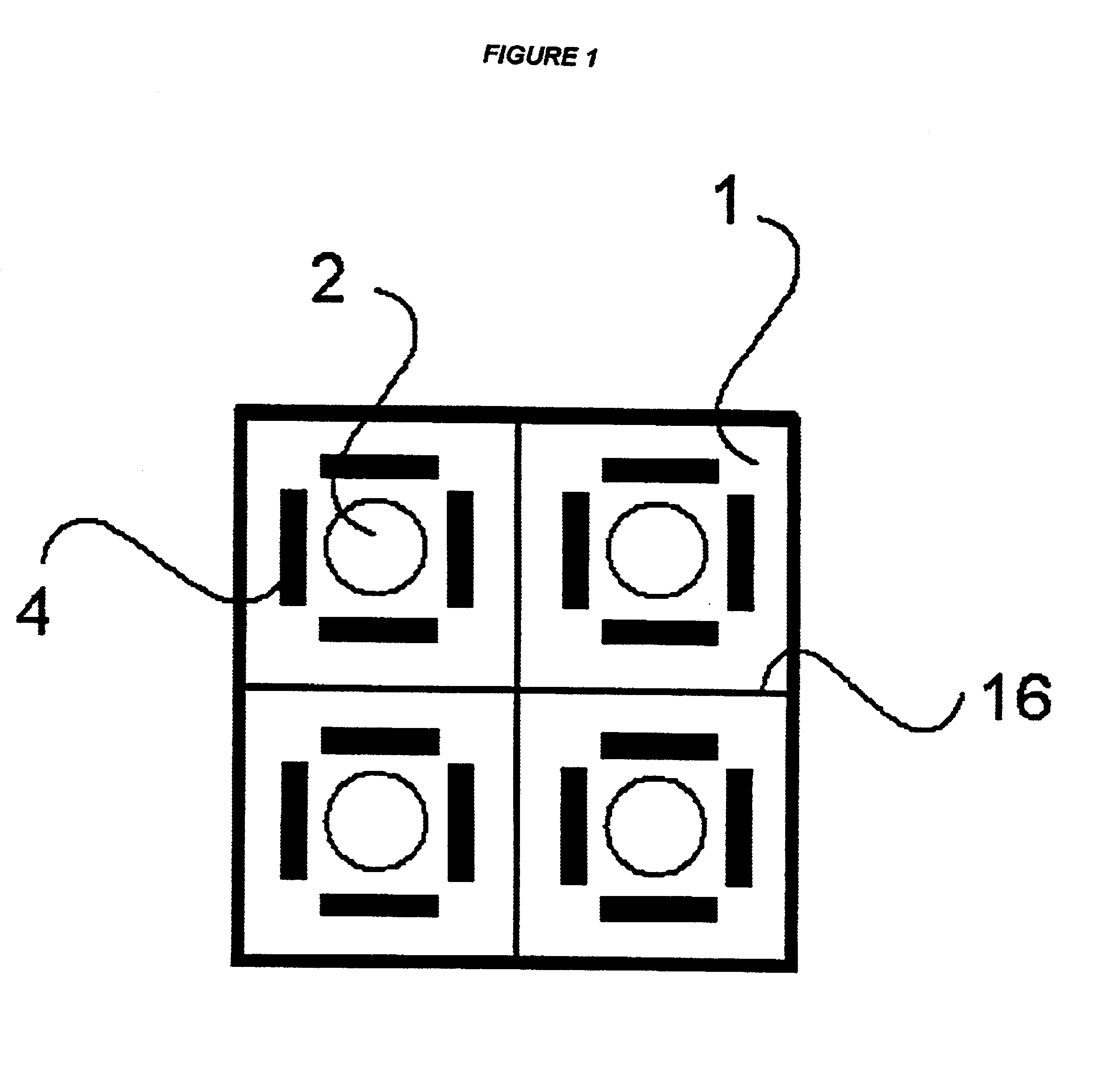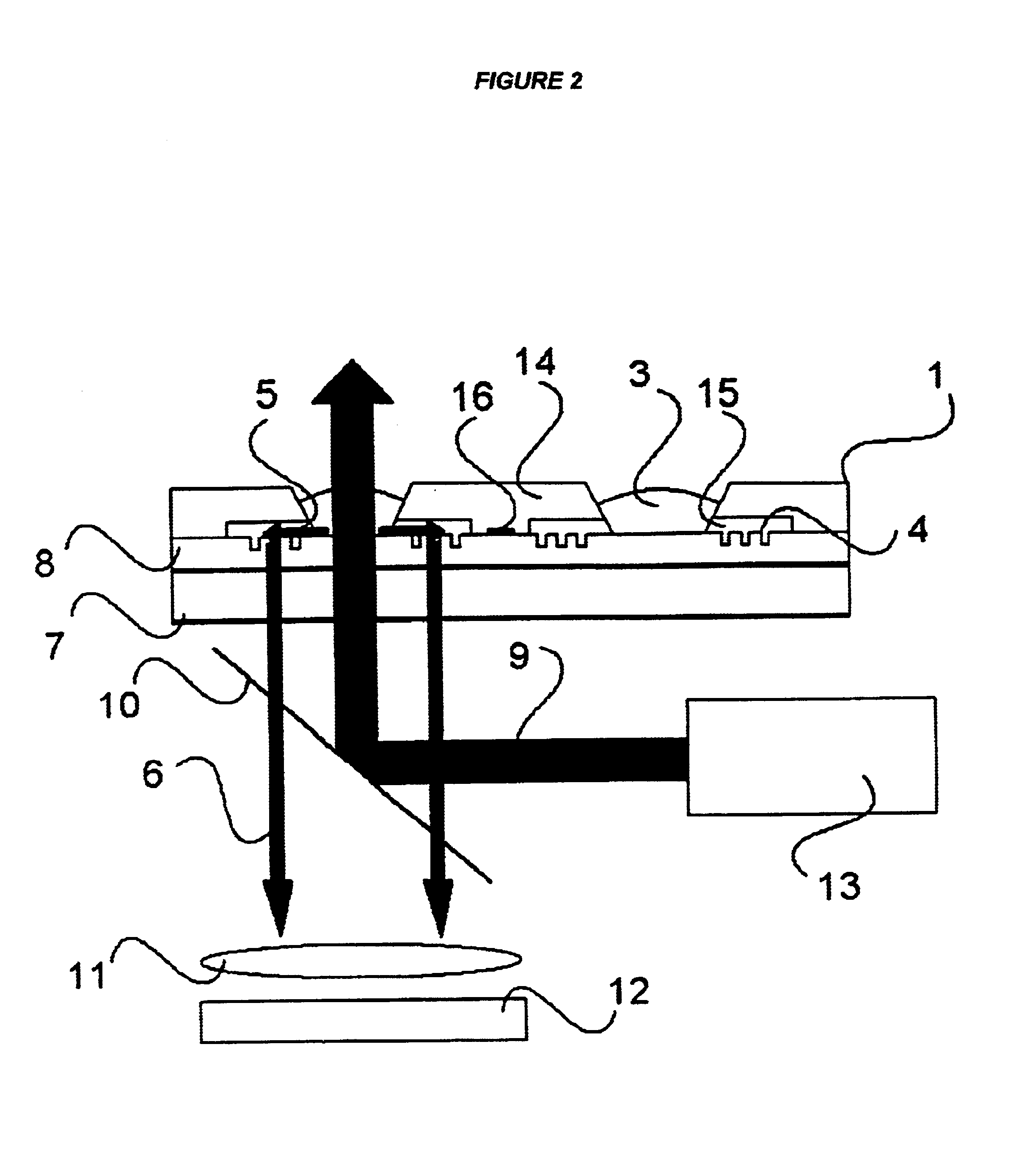Method and device for measuring luminescence
a luminescence and luminescence technology, applied in the direction of fluorescence/phosphorescence, optical radiation measurement, instruments, etc., can solve the problems of complicated technical design, inability to measure very low detection concentrations, and limited use of essentially coherent light in order
- Summary
- Abstract
- Description
- Claims
- Application Information
AI Technical Summary
Problems solved by technology
Method used
Image
Examples
Embodiment Construction
The effectiveness of the excitation method in the volume of an analyte sample 3 is tested with the aid of a DNA hybridizing assay. The waveguide consists of Corning glass C7059 as substrate material 7 and Ta.sub.2 O.sub.5 as waveguiding layer 8 (layer thickness 150 nm), and contains two outcoupling gratings 5 with a modulation transfer factor of approximately 10 nm and a grating period of 320 nm. The cutout for the analyte sample is located in the middle of the grating at a distance of 5 mm. In order to immobilize oligonucleotide detection elements, the waveguiding surface is silanized with 3-glycidoxypropyltrimethoxysilane in the liquid phase (ortho-xylene). The following oligonucleotide is covalently immobilized as a detection element on the functionalized silane layer with a typical occupation density of 10%. Amino-(C6bridging group)5'-CACAATTCCACACAAC-3'. The covalent bonding of the oligonucleotide is performed via the free amino group of the oligonucleotide and the epoxide grou...
PUM
 Login to View More
Login to View More Abstract
Description
Claims
Application Information
 Login to View More
Login to View More - R&D
- Intellectual Property
- Life Sciences
- Materials
- Tech Scout
- Unparalleled Data Quality
- Higher Quality Content
- 60% Fewer Hallucinations
Browse by: Latest US Patents, China's latest patents, Technical Efficacy Thesaurus, Application Domain, Technology Topic, Popular Technical Reports.
© 2025 PatSnap. All rights reserved.Legal|Privacy policy|Modern Slavery Act Transparency Statement|Sitemap|About US| Contact US: help@patsnap.com



